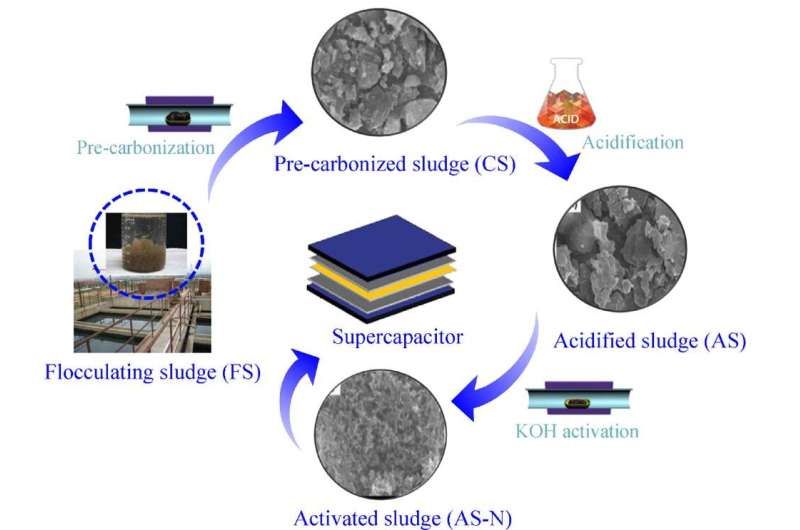
With the acceleration of urbanization and industrial development, the treatment rate of urban sewage and industrial wastewater has increased year by year. Taking China for instance, there were more than 3000 sewage treatment plants in 2015 with an output of 40 million tons of sludge (moisture content of 80%), and 53% of sludge was not effectively and safely disposed of. Floc sludge is a kind of solid waste produced in the treatment of urban sewage and industrial wastewater, which is a serious environment and human health hazard. Particularly in industrial wastewater treatment, sludge often contains elevated concentrations of harmful contaminants, such as suspended solids, metal ions and organic pollutants. However, traditional sludge disposal methods are not sufficient to prevent secondary pollution caused by leaching, diffusion, and resuspension in the environment. Therefore, an effective stabilization and hazard-free treatment is highly needed.
As a complex heterogeneous material composed of organic fragments, bacteria, colloid, inorganic particles, etc., sludge contains a large amount of carbon and metal salts. Consequently, much attention has been drawn to its excellent electrochemical properties. Furthermore, it has been noted that the electrochemical properties of carbon materials can be greatly improved by various types of pretreatments. It indicates that sludge has good application potential in the electrochemical field for reuse. However, there remain many questions that require further investigation. For instance, the feasibility of facile fabrication of capacitor from floc sludge, the effects of different treatment processes on the electrochemical properties of sludge materials, and the environment impacts such as the resource consumption and toxicity risk.
Using acidification and KOH activation at high temperature, researchers from the Institute of Process Engineering and University of Chinese Academy of Sciences have transformed floc sludge into porous carbon matrix composites and used it as an electrode material for application in capacitors, compared effects of different treatment processes on the electrochemical properties of sludge materials, and analyzed the environment impacts by life cycle assessment. This study entitled “Recovery and reuse of floc sludge for high-performance capacitors” is published online in Frontiers of Environmental Science & Engineering.
In this study, the research team found that the pore structure has formed via acidification and KOH activation at high temperature. They compared the crack effect of three different acids, and chose one of them to investigate the activation influence on the pore structure and electrochemical performance at four mass ratios of KOH/C further. Their study revealed that the conductivity increased by Fe, the mass transfer efficiency enhanced by more carboxyl functional groups, and new pores created by KOH activation method produced better properties for electrochemical applications. Their investigation showed that after KOH activated, the sludge material had good double-layer capacitive behaviors, more reversible and more beneficial for electrolyte ion diffusion and charge transfer. Finally, it pointed out an optimum treatment process after comparing the energy storage properties, the long-term stability and the normalized environmental impacts with the others synthetically.
This study developed a facile, clean and healthy resource utilization method by reusing floc sludge for carbon matrix electrodes with porous channels and high conductivity. This work not only provides a cost-effective strategy to synthesize hierarchical porous carbon as an electrode material for high-performance supercapacitors but also offers a promising method for the large-scale fabrication of energy storage materials from hazardous industrial waste.
Di Zhang et al, Recovery and reuse of floc sludge for high-performance capacitors, Frontiers of Environmental Science & Engineering (2021). DOI: 10.1007/s11783-021-1512-5
Provided by
Higher Education Press
Citation:
A new goal of floc sludge: As an electrode material for high-performance capacitors (2022, August 1)
retrieved 1 August 2022
from https://techxplore.com/news/2022-08-goal-floc-sludge-electrode-material.html
This document is subject to copyright. Apart from any fair dealing for the purpose of private study or research, no
part may be reproduced without the written permission. The content is provided for information purposes only.
For all the latest Technology News Click Here
For the latest news and updates, follow us on Google News.

